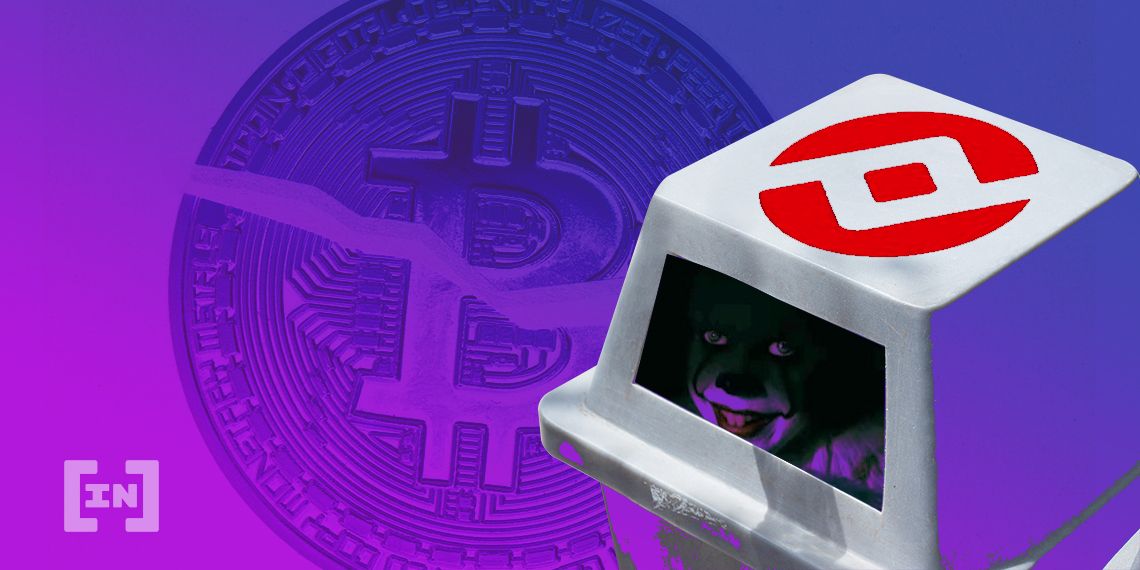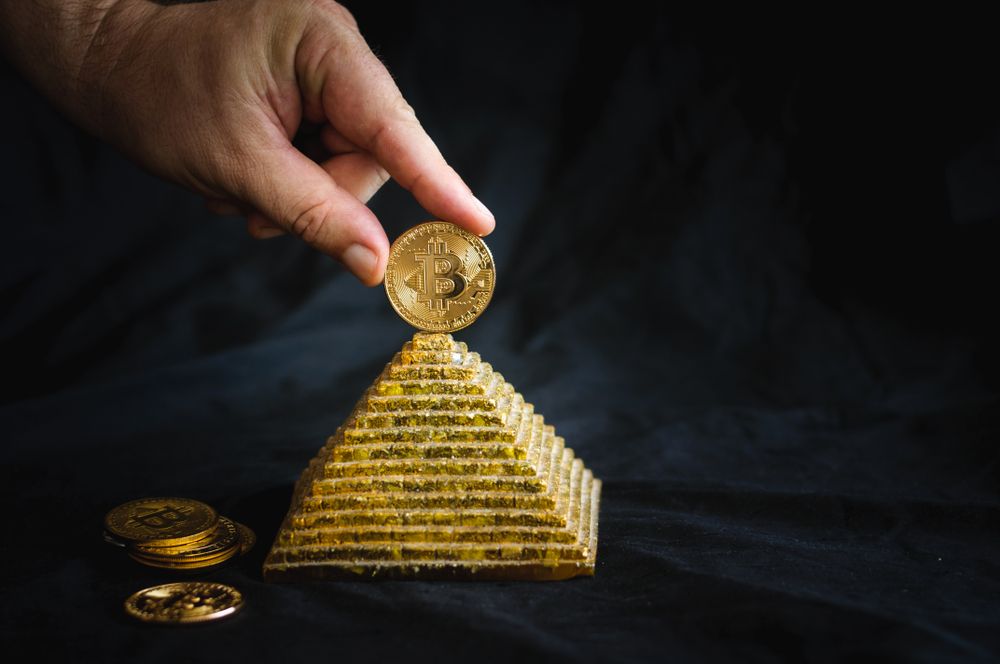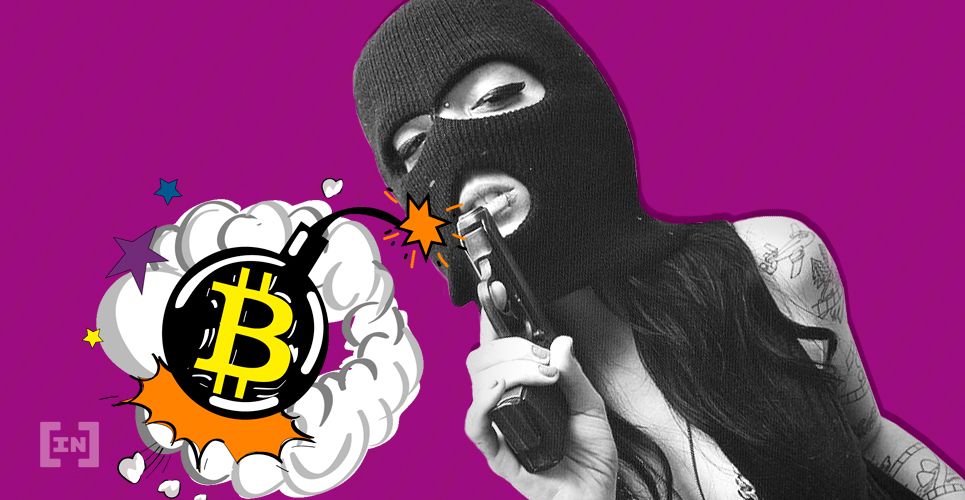Cryptocurrencies have been commonly associated with wealth. Many people think that this is an easy and novel method to make a mountain of money in a short time, although this is rather far from the truth. Cryptocurrencies is not usually a method of making money, but it is the money itself.
However, scammers all over the world have taken advantage of this common mistake to promise unrealistic profits to anyone who “invests” in their platforms, systems or shoddy tokens. This is how they managed to raise, during 2019 alone, at least 4 billion dollars between fraudulent Initial Currency Offers (ICO), phishing, false investments and, above all, pyramid schemes.
Of course, over the years there have been many more crypto-scams of all kinds. They are always more successful than each other, but there are scammers who have managed to make really big hits, some even billionaires. Below, BeInCrypto brings you the biggest crypto-scams in history until 2020.
In This Article:
Fake Exchanges, Wallets & Projects

Milton Group
One day you may come across on Facebook – or any other social network – a classic ad that mysteriously promises to multiply a very small investment for you over a few days. You’ll have to ask how or request more information. The next thing you know, they’ll ask for your phone number and start flooding you with calls to convince you of that magical investment with crypto.
The company that contacts does trades and swears that the more you invest, the more you earn. Perhaps you even dare to try out their platform with s small amount and check on-screen that indeed your investment is multiplied. That would excite anyone, so you invest more and more… until you discover that it is not possible to withdraw the alleged profits. Nor is anything you invested.
Here are the experiences of the victims of the infamous Milton Group, which also operates under the names Cryptobase, CryptoMB and VetoroBanc. Behind the scenes, a group of multilingual tele-operators meet in an office in Ukraine, Albania, Georgia or North Macedonia to follow established guidelines for defrauding as many unsuspecting people as possible. In return for their “work” they receive juicy commissions.
It is estimated that, during 2019 alone and from the Kiev Call Center (Ukraine), the Milton Group managed to defraud some 71.5 million dollars. Considering that the company has three years in operation and assuming that they made similar amounts in previous years, the total amounts to 214.5 million dollars. That is not counting the figures reached by the other Call Centers; so the losses cannot yet be calculated exactly.
The police investigation of the Milton Group case continues, as does the search for the perpetrators.
Mining Max
Investing in machines to mine crypto sounds as tempting as it is complicated. Because of this, it sounds wonderful to just put up the money while an expert takes care of the operation and maintenance of the machines and the software, so that in the end you can earn as much as possible from the mining itself.
This procedure of investing in miners that are managed by expert companies in the field is known as cloud mining. There are several platforms dedicated to this, where each user can choose a plan at different cost. Of course, there is always the risk that the part of the alleged experts will disappear with the money or will retain the majority in his own pockets.

Such was the case with Mining Max, a company based in the United States and mining farms in South Korea. In its early days around 2016, it presented itself as a cloud mining platform for altcoins and promised monthly returns to all its investors. As the site said at the time:
“Mining Max does not sell its own coins and does not deal with coins that are not traded in the Exchange Center. Mining Max is a company that produces coins of certain blockchains with the highest value in the market at present. Mining Max is a professional mining company that provides shipment management services for mining machines owned by individual members. The Mining Max large mining farm maximizes the profit margin capacity of individual mining machines with low electrical loads”.
Subsequently, they specialized in Ethereum mining. Or so it was thought, since in December 2017 the Korean authorities discovered the fraud and exposed it. The managers of Mining Max raised about $250 million from some 18,000 investors from 54 countries, including the United States, Japan, China and South Korea itself.
It is believed that only 80 million were invested in mining machines, while 110 million ended up in offshore bank accounts. The rest was used to pay off older investors, who in turn received money from lower levels of users, in what became a pyramid scheme.
Modern Tech (Pincoin and iFan)
This company was introduced in Vietnam as the representative of two Initial Currency Offers (ICO), where Pincoin and iFan tokens would be sold. The first was offered as an investment opportunity with monthly (and unexplained) returns of up to 40%; while the second promised to fuel a new social network for artists.

With this facade, Modern Tech was structured as a pyramid scheme where the older and more senior investors were the ones who benefited the most since the new ones paid their interest. In order to join the platform, each new member was required to “invest” a minimum of $1,000 in the above-mentioned tokens; which, in reality, were never worth that much.
By 2018, none of the promised profits were being paid. Modern Tech eliminated all their social networks and never showed up at their alleged offices. The defrauded investors could do nothing but go to protest against the phantom address of the company and report the case to the authorities: 666 million dollars had been lost by some 32,000 people. The perpetrators have not yet been caught.
BitClub Network
This is another case of cloud mining fraud, though no doubt more serious than Mining Max. The promise, however, is very similar:
“No ongoing fees and 24-hour support. Once you join BitClub Network, you’re in for 1,000 days. There are no additional fees to support mining or to upgrade equipment. You can choose what percentage of your mining revenue will be used to buy additional group shares and how much will be paid each day.”
From 2014, plans ranging from $50,000 to $100,000 are offered there in exchange for supposedly 5 to 12 percent of the investment. Interestingly, the latest plan can be purchased for as little as $10,000 for the same return.

In December 2019, U.S. authorities finally intervened on the platform, which turned out to be nothing more than a pyramid scheme, where new investors paid off the old ones. There was never any mining activity as such and three of the developers were arrested. Two more are still on the hunt.
Matthew Brent Goettsche, 37, was one of those arrested in Florida. He dared to openly declare that BitClub Network’s target was “stupid” investors, who were often referred to as “sheep. In his words, they were “building this whole model on the backs of idiots.
Unfortunately, the BitClub website is still online. That’s despite the fact that some $722 million has already been stolen thanks to it.
PlusToken
It can be said that this infamous platform was the biggest crypto scam of 2019. It has Asian origins, with a strong presence in China, South Korea and Japan, it is very similar to the Vietnamese Modern Tech. The main offer of this system was the PLUS token, which, presumably, would be able to return to investors between 9 and 20% per month.

Perhaps one of the reasons for their success was that, rather than advertising through electronic media, most of it took the form of meetings and events that allowed them to talk to potential investors face-to-face. In this way, they were able to convince them both as a group and individually. They also offered their “investment” through chats and even distributed physical advertising in public places such as supermarkets.
It was explained that the high percentage of profits supposedly came from cryptomoney trading, mining and referrals. In reality, PlusToken was always a pyramid scheme with no product, where only new members could inject fresh money that would go directly to pay the older investors or directly to the managers.

At the end of June 2019, users started having problems withdrawing their funds and administrators blamed the alleged miners. Soon after, they didn’t bother to make any more excuses and disappeared with about $3 billion from more than 3 million victims. Much of what was swindled was amounts in cryptocurrencies that still haunt the network: Bitcoin, Ethereum, EOS and OmiseGo. And the final transaction on their part brought the note of “Sorry, we have to run.”
The tracking company of blockchain, Chainalysis, even provided evidence that points to these scammers and their large volume of OTC trading in exchanges like Huobi as the culprits in last year’s drop in price. At least six of the team members were arrested.
OneCoin
This is perhaps the queen of all crypto scams until date. It is a long-standing, global pyramid scheme that has had a strong presence in the Hispanic world. As they themselves explain, OneCoin is a cryptocurrency with a private blockchain and a platform for learning about crypto. The firms OneLife, OneAcademy and OneWorldFoundation are part of the same scheme.
Right now, several “education packages” ranging from $110 to $55,555 are offered through OneLife and OneAcademy. OneWorldFoundation is a children’s charity that accepts donations through OneCoins, PayPal, bank transfer, and credit and debit cards.
In previous years, these alleged educational packages – with material plagiarized from various sources – included tokens that could allegedly be used to “mine” onecoins, when mining does not even work that way. In addition, users were rewarded on these tokens for bringing referrals to the platform.
These “onecoins” were never listed on any exchange and the only way to change them into fiat money was on the OneCoin Exchange, an internal market for members only. Of course, this was until 2017, when the exchange closed without warning.

In the same year, Ruja Ignatova, the leader behind the scheme, disappeared without a trace after facing several complaints in several countries since 2016. Her brother, Konstantin Ignatov, takes over and that is when the launch of a OneCoin ICO is promised.
Fortunately, Ignatov was arrested in March 2019 in Los Angeles. [BBC] Unfortunately, Ignatova is still missing and with it a large part of some $4 billion raised globally in many countries. However, other sources speak of up to 19.4 billion dollars missing because of this scheme.
OneLife’s websites and social networks are still in operation, so they should be avoided.
Extra: BitConnect
It can be said that the case of BitConnect (BCC) was somewhat different from that of other crypto scams, since it was, in fact, a decentralized cryptocurrency at the time. And all decentralized cryptocurrencies rely mostly on trust, so the BCC managed to climb very high on the list of cryptocurrencies by market capitalization from its launch in 2016.
Its main offering was a lending platform at BCC where up to 40% of profits could be made on borrowed funds. Also, up to 1% per day could be earned from holdings alone, plus another percentage for each referral that was included in the system. At a time when the crypto market was even more influential than now, full of inexperienced and enthusiastic investors, what was clearly always a pyramid scheme hidden behind a digital currency managed to achieve overwhelming success.
The price per token peaked at $476, while its capitalization exceeded $2.1 billion by January 2018. But that would only be the beginning of the end.
Earlier that month, the Texas State Securities Board issued a shutdown order for BitConnect, claiming that it was only a pyramid scheme and was misleading its investors. Not many days later, on January 17, 2018, the BitConnect team (which remained anonymous) decided to simply close down its lending platform and the price of the token plummeted.
It was an “every man for himself” scenario: all the users of who held this cryptocurrency started selling it en masse to avoid further losses, so it’s hard to know how much was actually lost due to this scheme. It wasn’t until September 10, 2018, that the last exchange that had BCC available for trading (Trade Satoshi) ultimately removed it from its platform.
To date, all that remains of this scheme is the Internet meme initiated by Carlos Matos, one of its most popular promoters: Hey, hey, hey, Bitconneeect!
That and, unfortunately, a failed class action suit against the platform’s administrators.
Warning Signs
We can always fight against scams, because these are only deceptions towards the less knowledgeable. It is therefore necessary to educate oneself as much as possible about the crypto sphere and to take into account several warning signs that all these schemes usually follow.
In the first place, each and every one of them requests some “investment” and never usually warns about the risks of loss. All investments have some degree of risk; none are exempt. Therefore, if someone mentions that your investment will be 100% risk-free and with secured payments, it is most likely that their intention is to make some sort of scam.
Another essential factor to consider is the functioning of that platform. Where do you get your money from? Can you prove that you get it from where you say? Withdrawals are also part of it. If instead of your funds when trying to withdraw you get “technical failures” for a long time, “tax” requests or any other excuse, you can be sure that it is a fraudulent actor.
You also need to look at the team that runs the system – is it shown on the official site, and can you check that they are real people? And if they are, do they have any kind of criminal record?
Research and education are key to avoiding scams. Not all that glitters is gold.
Fake Exchanges, Wallets and Projects
One of the most direct types of scams out there is simply criminals putting forward a product or service that is meant to trick people into trusting it with their money. There has been no shortage of fraudulent exchanges, fake wallets and new coins that amount to nothing across the cryptocurrency space in recent years. Sometimes these cons try to look like a known, legitimate company. Other times they simply try to look professional enough to gain new user’s trust. In any event, once they secure your money, you won’t be getting it back. The best way to stay safe from these scams is to go slow and do your homework. Only follow known, trusted links, listen to what the community is saying about these services, and if something just doesn’t feel right, don’t trust it.

One other common fraud along these lines is the “Free Giveaways” you tend to see on Twitter. Often emulating the account of a known entity, like a major developer or exchange, they promise to give out massive payouts to those who “register.” Usually, this means either sending some coin to an address or providing personal information. In either event, this is always a scam. Nobody ever gives away free money, and no matter what they say, this will be no different.
Pyramid Schemes
A pyramid scheme is any type of scam which requires a constant stream of new “investors” in order to continue. Generally, these will ask for an initial investment from the user and promise remarkable returns, probably very quickly. The reality is that early investors get their returns by bringing in newer investors, but sooner or later new investors will run out. Since the money is getting channelled upward, the original creator of the scam will end up with most of the money and usually disappear when it becomes clear the momentum is running out, leaving most of the people on the bottom with notable losses.

One of the most famous examples of this is Bitconnect, which was revealed as a ponzi scheme years ago after taking billions from investors in exchange for useless coins. Though now defunct, to this day projects exist in the cryptocurrency space that amounts to the same model. The best defence here again comes in the form of taking the time to understand an offer before investing in it, as well as being very suspicious of anything boasting unusually high returns.
Traditional Scams
Often the scams being used today don’t differ much from the ones harming consumers for years. These come in the form of phone calls, emails or texts that either offer some promised reward for taking part in a contest, or alternatively threaten legal action against the consumer, possibly even blackmail. In any event, the claims are falsehoods trying to entice or scare unprepared citizens into handing over some of their cryptocurrency.

As already covered, anything that seems too good to be true almost certainly is, however, fear tactics can be even more effective. They may emulate the IRS or other regulatory body. They may threaten the user claiming possession of recorded private footage from the individual’s webcam, and demand some Bitcoin lest they release the footage on social media. While obviously each scenario could be different, it is almost always based on lies. Official agencies will not contact you in this way, and it is much easier to lie about having sensitive information than it is to actually get it.
An offshoot of this kind of scam happens mostly through text and email and is called phishing. Again, the message will try to look like something official and important and prompt the user to follow a link to get more information. Usually just clicking on that link is enough to initiate the installation of nefarious software onto your device. This brings us to our next major category, malware.
Malware
Malware is generally any type of software designed to steal money or information from your device. This can be accomplished in many ways. One is simply installing a keylogger, or software that records everything you type and transmits it back to the attacker, inevitably revealing usernames and passwords. Another type scans the system clipboard for cryptocurrency addresses and, if one is found, replaces it with an attacker-controlled address. This makes it a good idea to double and triple check addresses before sending transactions, even if you used copy and paste.

One other infamous version of malware is known as “ransomware,” because it will encrypt a user’s entire device and refuse to unlock it unless the user sends a certain amount of cryptocurrency to a specific address, usually under a time limit. This type of malware has been used repeatedly to target businesses and governments, who often do end up paying the ransom as it is generally less expensive than losing their entire computer network.
The main way to avoid these types of attacks is to never click on anything you don’t 100% trust. It also certainly doesn’t hurt to separate sensitive systems, like where you store your cryptocurrency, from general use systems, like where you surf the web and social media.
Pump and Dump
One more common form of scam comes from small, organized groups that will seek to generate inordinate hype around some specific, usually small-cap coin. They will buy some for themselves initially, then have a coordinated campaign on social media to generate some buzz for the project and get new money to start coming in. This will cause a bump in price, which will then start a FOMO feedback loop as more people will now believe they have to jump on this opportunity.

As the buying reaches a fever pitch, the initial group who plotted this will sell, usually causing the pump to cease, followed by a collapse as later investors freak out and realize they’re losing money. In the end, few come out ahead except for the scammers. The obvious way to avoid this is to never panic buy into any position, and again, always do your homework.
Conclusion
This guide covers the most common forms of bitcoin scams currently going around in cryptocurrency. That being said, criminals are very clever and are always looking to find new ways to dupe unsuspecting investors. The best advice is always to go slow and do research, always double-check, listen to the community and don’t invest with emotion. Following those rules should keep most users out of any serious trouble.
To learn more about avoiding scams, join us in our Telegram Trading Community.



